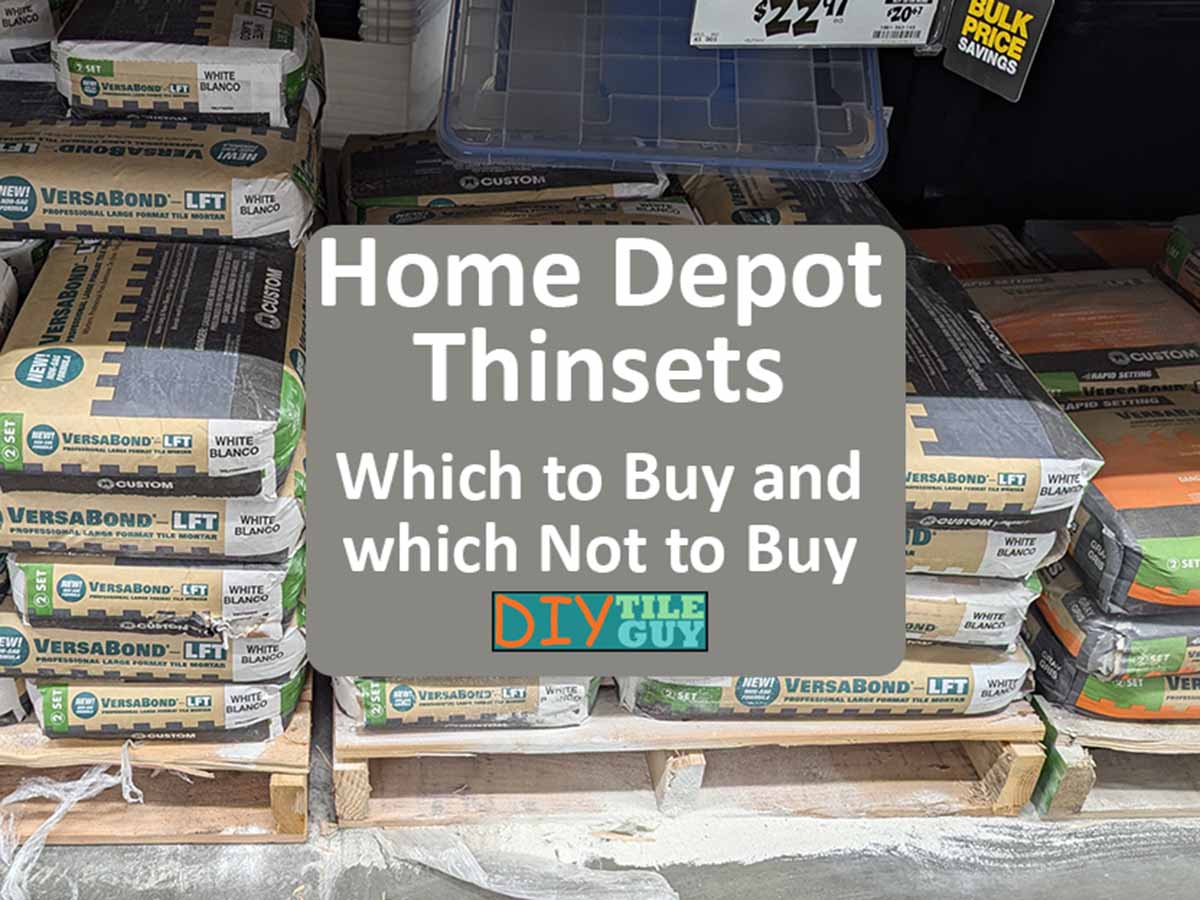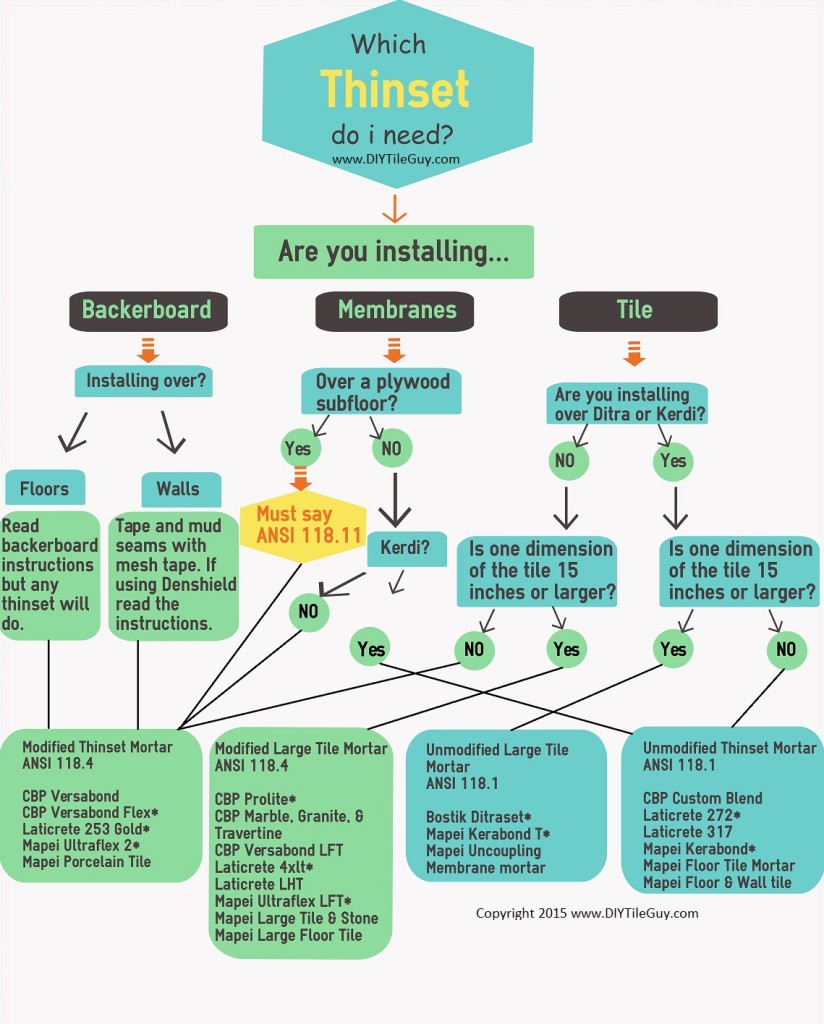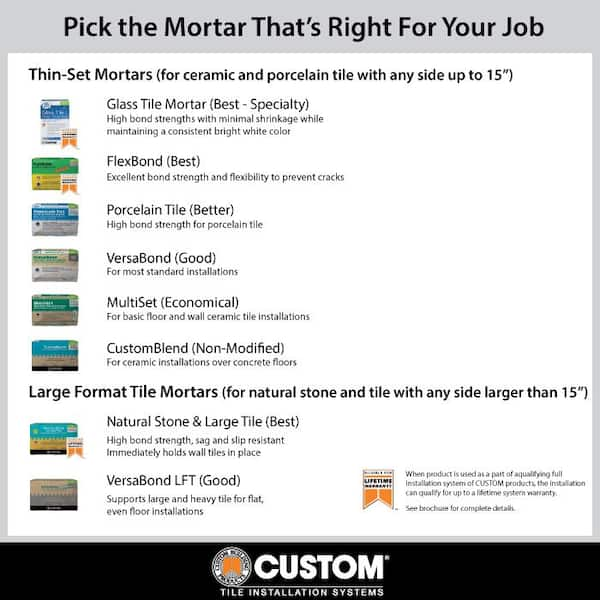Choosing the right adhesive for your tiling project can feel overwhelming. You’re standing in the aisle, staring at the endless options, and then you spot them: Versabond and Flexbond.
But which one should you pick? This decision isn’t just about sticking tiles together; it’s about ensuring your work lasts for years without issues. The wrong choice could lead to costly repairs or even a full redo. In this blog post, we dive into the differences between Versabond and Flexbond, helping you make an informed decision.
Discover the unique features, benefits, and drawbacks of each product. By the end, you’ll know exactly which adhesive fits your specific needs. Don’t risk your project on guesswork; read on to ensure your tiling job is a success.

Credit: www.diytileguy.com
Tile Adhesive Basics
Choosing the right tile adhesive is crucial for successful installations. Versabond and Flexbond are popular options. Understanding the basics helps make informed choices.
What Is Tile Adhesive?
Tile adhesive is a cement-like substance used to bind tiles to surfaces. It ensures tiles stay in place and resist movement. The right adhesive prevents cracking and loosening.
Importance Of Tile Adhesive
Proper adhesive keeps tiles secure and stable. It impacts the durability and appearance of the tile work. Quality adhesive provides a strong bond and long-lasting results.
Types Of Tile Adhesives
There are several types, each suited for different needs. Cement-based adhesives are common for floors and walls. Epoxy adhesives offer strong bonds for wet areas.
Versabond Tile Adhesive
Versabond is a versatile cement-based adhesive. It works well for most tile installations. It is easy to use and mix with water.
Flexbond Tile Adhesive
Flexbond is known for its flexibility and strength. It suits tiles in areas with movement or vibration. It provides a strong bond even in challenging conditions.
Choosing Between Versabond And Flexbond
Consider the location and conditions of your tile work. Versabond suits general installations. Flexbond is ideal for more demanding environments.

Credit: www.diytileguy.com
Versabond Characteristics
Versabond offers good flexibility and moderate strength, making it suitable for various projects. In comparison, Flexbond provides greater flexibility and strength, ideal for challenging installations. Consider project needs when choosing between Versabond and Flexbond.
When it comes to choosing the right tile adhesive, the debate between Versabond and Flexbond often arises. Understanding the characteristics of Versabond can guide your decision-making and ensure you pick the right product for your tiling project. Let’s delve into the specifics and see how Versabond stands up.Composition And Properties
Versabond is a versatile, polymer-modified thin-set mortar that is designed to adhere tiles to a variety of surfaces. Its composition includes cement, sand, and special additives that enhance bonding strength. The properties of Versabond make it a reliable choice for both indoor and outdoor tile applications. It offers good flexibility and adhesion, which helps prevent cracks and shifts. You might find it particularly beneficial if you’re working on a surface that experiences slight movement or expansion. Have you ever worried about tiles lifting due to temperature changes? Versabond’s composition addresses this concern by maintaining a strong bond across varying conditions.Best Use Cases
Versabond shines in residential tiling projects where the substrate is stable and doesn’t require extra heavy-duty adhesion. It’s perfect for kitchen backsplashes, bathroom floors, or walls where the tiles aren’t subject to excessive weight. If you’re tiling over concrete or cement board, Versabond provides the right level of adhesion needed without overkill. However, for surfaces prone to moisture or heavy traffic, you might want to consider other options. Think about your last tiling project. Did you wish for an adhesive that was easy to work with and offered strong results? Versabond might just be the answer.Pros And Cons
Pros: – Ease of Use: Versabond is user-friendly, mixing easily and spreading smoothly, making it ideal for DIY projects. – Cost-Effective: It offers a balance of performance and affordability, making it a budget-friendly choice for many homeowners. – Reliable Bonding: Its polymer modification ensures a strong bond that suits most residential needs. Cons: – Limited Heavy-Duty Application: While Versabond is strong, it might not be the best choice for commercial settings or high-moisture areas. – Flexibility Limitations: For surfaces with significant movement, the flexibility may not be sufficient compared to other products. Have you ever found yourself caught between cost and quality? Versabond gives you the best of both worlds, but consider if its limitations align with your project’s demands. Making a choice between Versabond and other adhesives depends on your specific needs. Evaluate the characteristics, think about your project, and decide which adhesive will ensure the best outcome for your tiles.Flexbond Features
Flexbond stands out with superior bond strength compared to Versabond. Its crack prevention feature ensures durability in challenging conditions. Ideal for projects requiring extra adhesion and flexibility.
Flexbond is a popular choice for those seeking durable tile installation. This product offers unique features that cater to various needs in construction projects. Understanding its attributes helps in making informed decisions.Composition And Properties
Flexbond is a polymer-modified mortar. It contains special additives to enhance flexibility. This flexibility reduces the risk of tile cracks. It adheres well to different surfaces. High bond strength ensures tiles stay in place. Its composition resists water penetration effectively.Ideal Applications
Flexbond suits installations on challenging surfaces. It works well on plywood and concrete. Ideal for high-moisture areas such as bathrooms. Perfect for exterior tile applications. Its flexibility supports installations on unstable surfaces. Great for projects requiring vibration resistance.Pros And Cons
Pros include excellent adhesion. It prevents tile cracks and water damage. Suitable for various surfaces, enhancing versatility. Cons involve higher cost than regular mortar. It may require professional installation. Not ideal for extremely high traffic areas.
Credit: www.homedepot.com
Comparative Analysis
Choosing the right tile adhesive can greatly impact your project. Versabond and Flexbond are popular options. Each offers distinct benefits. This comparative analysis will help you make an informed decision.
Performance And Durability
Versabond provides strong adhesion. It works well with ceramic and porcelain tiles. It’s suitable for both indoor and outdoor applications. Flexbond offers enhanced flexibility. This helps resist cracks and shifts. Its advanced formula is ideal for challenging installations. Both adhesives promise lasting results. Consider your specific needs for the best choice.
Cost And Value
Versabond is more budget-friendly. It provides good performance at a lower cost. Flexbond is priced higher. It offers superior flexibility and protection. These benefits can justify the higher price. Evaluate your budget and project requirements. Choose the adhesive that offers the best value for your money.
Ease Of Application
Versabond is easy to mix and apply. It spreads smoothly and evenly. This makes it user-friendly for DIY enthusiasts. Flexbond requires careful mixing. Its thicker consistency demands more attention. Professionals may find it easier to handle. Consider your skill level and project complexity. Select the adhesive that suits your application needs.
Environmental Considerations
When choosing between Versabond and Flexbond, environmental considerations matter. Both products impact our planet in different ways. Understanding these aspects helps make informed decisions. Let’s explore the environmental factors of Versabond and Flexbond.
Composition And Ingredients
Versabond uses a mix of cement and sand. This composition is common in many adhesives. Flexbond incorporates polymers for enhanced flexibility. These polymers can impact the environment differently. Knowing the ingredients helps assess their ecological footprint.
Production Process
The production of Versabond involves standard cement manufacturing. This process emits carbon dioxide. Flexbond’s production includes polymer synthesis. This method may have additional environmental effects. Comparing these processes reveals their impact on our planet.
Packaging Materials
Versabond packaging uses traditional plastic bags. These bags contribute to plastic waste. Flexbond offers recyclable packaging options. This choice reduces its environmental impact. Packaging materials play a role in sustainable practices.
Disposal And Waste Management
Disposing of Versabond requires careful handling. Its components can affect soil and water. Flexbond’s disposal process is similar. Proper waste management prevents environmental harm. Understanding disposal needs ensures responsible use.
Durability And Longevity
Versabond offers solid performance, reducing the need for frequent replacements. Flexbond’s flexibility can enhance longevity in specific conditions. Longer-lasting products decrease environmental strain. Choosing durable adhesives supports sustainability.
User Experiences
Versabond and Flexbond offer distinct user experiences in tile installation. Versabond provides reliable adhesion for standard projects. Flexbond excels in challenging conditions, offering enhanced flexibility and crack prevention. Both products cater to specific needs, ensuring a smooth tiling process.
When you’re faced with the choice between Versabond and Flexbond, understanding user experiences can make your decision easier. Real-life feedback from both professionals and DIY enthusiasts provides valuable insights into how each adhesive performs. Whether you’re a seasoned contractor or a weekend warrior, these perspectives can help you choose the right product for your project.Professional Opinions
Many contractors prefer Flexbond for its superior bonding strength. They often highlight its ability to handle challenging substrates and environments, such as outdoor patios or areas with high foot traffic. One professional mentioned how Flexbond’s flexibility made it the go-to choice for projects requiring durability, like commercial spaces. On the other hand, Versabond earns praise for its ease of use and quick application. Professionals appreciate its smooth consistency, which speeds up the workflow without compromising on quality. Its cost-effectiveness is another plus, especially for large-scale projects where budget considerations are crucial.Diy Enthusiast Feedback
For DIY enthusiasts, Versabond often emerges as a favorite due to its user-friendly nature. Many users find it forgiving, even if their troweling skills aren’t perfect. A homeowner shared their experience of tiling a bathroom for the first time, and how Versabond’s manageable consistency helped them achieve a professional-looking finish without prior experience. Flexbond, while slightly more challenging for beginners, is praised by DIYers who value long-lasting results. A DIYer recounted using Flexbond for a kitchen backsplash that needed to withstand heat and moisture, noting its reliable performance over time. This adhesive’s added strength can be appealing if you’re tackling projects in demanding environments. Have you ever faced a tough decision between two seemingly similar products? Your choice can make a big difference in the outcome of your project. Whether you lean towards Versabond’s ease or Flexbond’s strength, understanding these user experiences can guide you to the right decision.Making The Right Choice
Choosing between Versabond and Flexbond can be challenging. Each has its unique advantages. The right choice depends on your project’s needs and budget. Understanding these factors helps make an informed decision.
Project Specific Needs
Consider your project’s requirements. Versabond is ideal for indoor projects. It provides a smooth finish. Flexbond suits areas with temperature changes. It can handle outdoor conditions. Evaluate the environment where you will apply the adhesive. Choose the one that matches your project’s demands.
Budget Constraints
Budget plays a crucial role. Versabond is more affordable. It fits into tight budgets. Flexbond costs more. It offers additional durability. Assess the financial aspect of your project. Pick the adhesive that aligns with your budget.
Frequently Asked Questions
What Is Versabond Used For?
Versabond is a versatile mortar. It’s ideal for tile installations. Works well in both residential and commercial settings.
Why Choose Flexbond Over Versabond?
Flexbond offers superior flexibility. It helps prevent cracking. Perfect for areas with temperature changes or movement.
Can Versabond Be Used Outdoors?
Yes, Versabond is suitable for outdoor use. It resists weather and moisture. Great for patios and walkways.
Is Flexbond Better For High-traffic Areas?
Flexbond’s flexibility makes it great for high-traffic areas. It withstands heavy use. Ideal for malls or busy kitchens.
How Does Versabond Differ From Flexbond?
Versabond is general-purpose. Flexbond has added flexibility. Choose based on your specific project needs.
Conclusion
Choosing between Versabond and Flexbond depends on your project needs. Versabond offers good value for basic tile work. It’s reliable and easy to use. Flexbond is ideal for challenging surfaces. It provides strong adhesion and flexibility. Consider your surface type and location.
Think about your budget too. Both products have their strengths. Evaluate your specific requirements carefully. Make an informed decision for a successful tiling job. With the right choice, you’ll achieve the desired results. Happy tiling!




